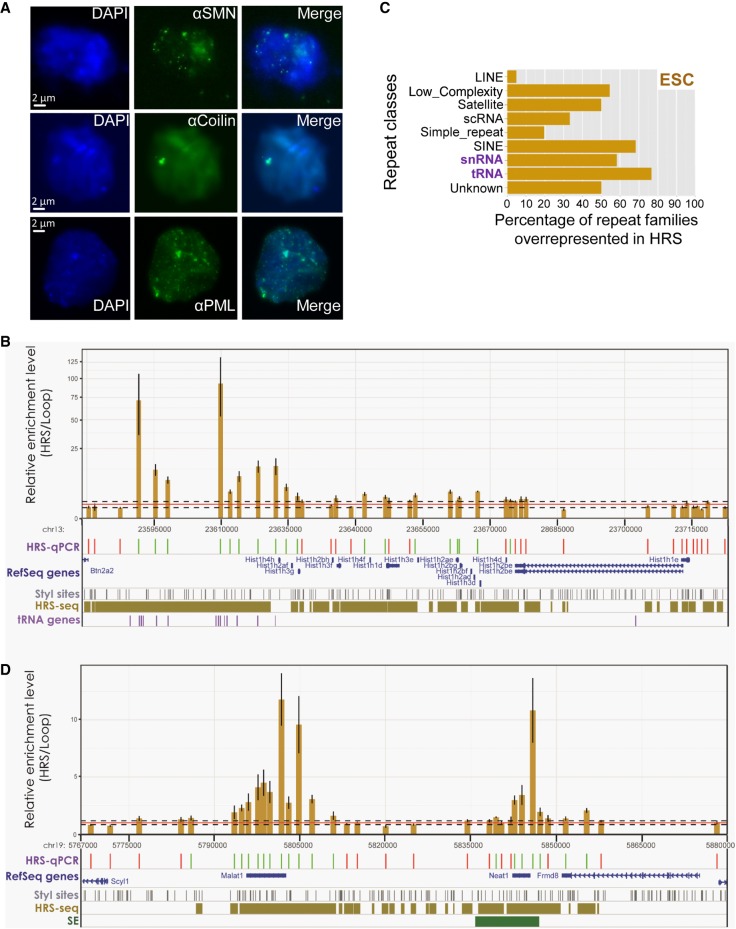Figure 8.
HRSs include nuclear body–associated sequences. (A) Immunofluorescence (IF) microscopy experiments were performed on nuclear halos using the following antibodies: αSMN (Cajal Bodies and Gems) (top), αCoilin (Histone Locus Bodies and Cajal bodies) (middle), and αPML (PML bodies) (bottom). DAPI staining is shown on the left, IF in the center, and the merged picture on the right. (B) The enrichment levels (HRS vs. Loop fractions) of StyI fragments at the Hist1 locus were determined by qPCR (HRS-qPCR) in ESCs (brown bars). Tracks below the histogram are as described in Figure 7. tRNA genes are also indicated below the histogram. n = 3 (technical replicates); error bars, SEM. (C) The enrichment (given in percentage of total family members) in ESC HRSs of 1554 repeat families was calculated and compared to enrichments obtained from “random permutation tests” with n = 1000 random resampling (1000 random sets of equivalent numbers of StyI fragments). For each class of repeats, the percentage of repeat families that was found significantly overrepresented in HRSs (P-value <0.001) compared with randomizations was determined. (D) HRS-qPCR experiments were performed at the Malat1/Neat1 gene locus as indicated above (B). n = 3 (technical replicates); error bars, SEM. Tracks below the histogram are as described above (no tRNA gene is mapping to this locus) (B; Fig. 7).

